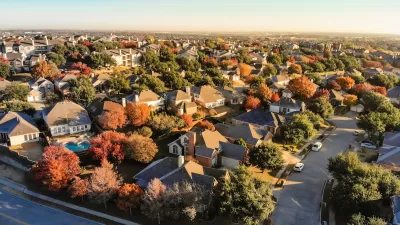A deep dive into the statements on official housing policies of Joe Biden and Bernie Sanders in an era of intense housing anxieties.

Alissa Walker takes a dive into the housing platforms of the two remaining frontrunners for the Democratic nomination for president.
Now, with Biden neck-and-neck in the delegate count with Sen. Bernie Sanders, teasing out the nuances around rental assistance, neighborhood displacement, and how the government pays for housing may prove pivotal for Democratic voters in a country where a minimum-wage worker cannot afford to rent a two-bedroom apartment anywhere in the U.S. As voters pick between these two frontrunners, they’re choosing what the housing future of America might look like.
Former Vice President Biden for the first time addressed housing on the campaign trail just days before the recent primary in South Carolina, so some digging is required, but Walker calls on experts for insight, like Jenny Schuetz, an urban economist at the Brookings Institution; Rachel Reyes, an organizer for the Sanders campaign; and Diane Yentel, executive director of the National Low Income Housing Coalition. The latter of that group is on the record saying the campaign is pushing candidates to address housing in new ways—to the benefit of the country no matter who wins the nomination, and eventually, November's election.
FULL STORY: In Biden vs. Sanders race, two differing visions for housing

Planetizen Federal Action Tracker
A weekly monitor of how Trump’s orders and actions are impacting planners and planning in America.

Restaurant Patios Were a Pandemic Win — Why Were They so Hard to Keep?
Social distancing requirements and changes in travel patterns prompted cities to pilot new uses for street and sidewalk space. Then it got complicated.

Map: Where Senate Republicans Want to Sell Your Public Lands
For public land advocates, the Senate Republicans’ proposal to sell millions of acres of public land in the West is “the biggest fight of their careers.”

Maui's Vacation Rental Debate Turns Ugly
Verbal attacks, misinformation campaigns and fistfights plague a high-stakes debate to convert thousands of vacation rentals into long-term housing.

San Francisco Suspends Traffic Calming Amidst Record Deaths
Citing “a challenging fiscal landscape,” the city will cease the program on the heels of 42 traffic deaths, including 24 pedestrians.

California Homeless Arrests, Citations Spike After Ruling
An investigation reveals that anti-homeless actions increased up to 500% after Grants Pass v. Johnson — even in cities claiming no policy change.
Urban Design for Planners 1: Software Tools
This six-course series explores essential urban design concepts using open source software and equips planners with the tools they need to participate fully in the urban design process.
Planning for Universal Design
Learn the tools for implementing Universal Design in planning regulations.
Heyer Gruel & Associates PA
JM Goldson LLC
Custer County Colorado
City of Camden Redevelopment Agency
City of Astoria
Transportation Research & Education Center (TREC) at Portland State University
Camden Redevelopment Agency
City of Claremont
Municipality of Princeton (NJ)





























